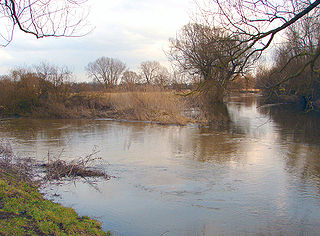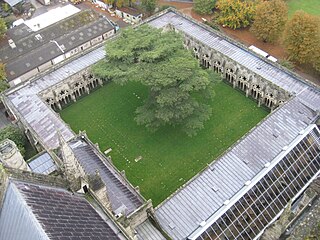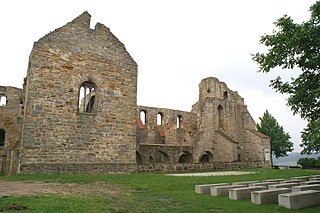| Süpplingenburg | ||
|---|---|---|
| ||
| Coordinates: 52°15′N10°55′E / 52.250°N 10.917°E Coordinates: 52°15′N10°55′E / 52.250°N 10.917°E | ||
| Country | Germany | |
| State | Lower Saxony | |
| District | Helmstedt | |
| Municipal assoc. | Nord-Elm | |
| Government | ||
| • Mayor | Dieter Eckner | |
| Area | ||
| • Total | 14.30 km2 (5.52 sq mi) | |
| Elevation | 114 m (374 ft) | |
| Population (2015-12-31) [1] | ||
| • Total | 654 | |
| • Density | 46/km2 (120/sq mi) | |
| Time zone | CET/CEST (UTC+1/+2) | |
| Postal codes | 38376 | |
| Dialling codes | 05355 | |
| Vehicle registration | HE | |
| Website | www.samtgemeinde-nord-elm.de | |
Süpplingenburg is a municipality in the district of Helmstedt, Lower Saxony, Germany. It is part of the collective municipality ( Samtgemeinde ) of Nord-Elm.

Municipalities are the lowest level of official territorial division in Germany. This is most commonly the third level of territorial division, ranking after the Land (state) and Kreis (district). The Gemeinde which is one level lower in those states also includes Regierungsbezirke as an intermediate territorial division. The Gemeinde is one level higher if it is not part of a Samtgemeinde. Only 10 municipalities in Germany have fifth level administrative subdivisions and all of them are in Bavaria. The highest degree of autonomy may be found in the Gemeinden which are not part of a Kreis. These Gemeinden are referred to as Kreisfreie Städte or Stadtkreise, sometimes translated as having "city status". This can be the case even for small municipalities. However, many smaller municipalities have lost this city status in various administrative reforms in the last 40 years when they were incorporated into a Kreis. In some states they retained a higher measure of autonomy than the other municipalities of the Kreis. Municipalities titled Stadt are urban municipalities while those titled Gemeinde are classified as rural municipalities.

Helmstedt is a district in Lower Saxony, Germany. It is bounded by the district of Wolfenbüttel, the City of Braunschweig, the District of Gifhorn, the City of Wolfsburg and the State of Saxony-Anhalt.

Lower Saxony is a German state (Land) situated in northwestern Germany. It is the second-largest state by land area, with 47,624 km2 (18,388 sq mi), and fourth-largest in population among the 16 Länder federated as the Federal Republic of Germany. In rural areas, Northern Low Saxon and Saterland Frisian are still spoken, but the number of speakers is declining.

The village developed next to a 10th-century water castle at the Schunter river, probably erected by the Counts of Haldensleben who then held the office of margraves of the Northern March. Gertrud von Haldensleben's daughter, Hedwig of Formbach, married Count Gebhard of Supplinburg. Until 1173 the castle was the seat of the Counts of Supplinburg, among them Gebhard's son Emperor Lothair III of Supplinburg.

A water castle is a castle or stately home whose site is entirely surrounded by water-filled moats or natural waterbodies such as island castles in a river or offshore.

The Schunter is a river in Lower Saxony, Germany, with a length of 58 km, right tributary of the Oker. It originates in the Elm hills near Räbke west of Helmstedt, flows northward to Süpplingenburg, then turns westward and joins the Oker at Schwülper, downstream of Braunschweig (Brunswick). Another municipality on the Schunter is Lehre.

Haldensleben is a town in Saxony-Anhalt, Germany. It is the administrative seat of the Börde district.
Lothair had a collegiate church and cloister built within the Supplinburg palace about 1130. In 1173 his grandson Henry the Lion granted Süpplingenburg to the Knights Templar order, from which it fell to the Knights Hospitaller in 1357. It remained a commandry ( Komturei ) of the Order of Saint John until in 1820 it was finally mediatised to the Duchy of Brunswick. The castle was demolished about 1875, while the St John Church survived, today a stop at the scenic Romanesque Road.

In Christianity, a collegiate church is a church where the daily office of worship is maintained by a college of canons: a non-monastic or "secular" community of clergy, organised as a self-governing corporate body, which may be presided over by a dean or provost. In its governance and religious observance a collegiate church is similar to a cathedral, although a collegiate church is not the seat of a bishop and has no diocesan responsibilities. Collegiate churches were often supported by extensive lands held by the church, or by tithe income from appropriated benefices. They commonly provide distinct spaces for congregational worship and for the choir offices of their clerical community.

A cloister is a covered walk, open gallery, or open arcade running along the walls of buildings and forming a quadrangle or garth. The attachment of a cloister to a cathedral or church, commonly against a warm southern flank, usually indicates that it is part of a monastic foundation, "forming a continuous and solid architectural barrier... that effectively separates the world of the monks from that of the serfs and workmen, whose lives and works went forward outside and around the cloister."
Henry the Lion was a member of the Welf dynasty and Duke of Saxony, as Henry III, from 1142, and Duke of Bavaria, as Henry XII, from 1156, the duchies of which he held until 1180.
- St. John Church
- St. John Church





















